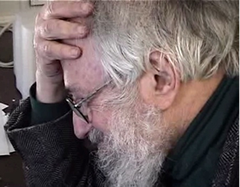

Despite the vagueness of the proposal, Wing’s position was taken as a trampoline for several initiatives to bring computer science into all levels of K-12 education (see, e.g., Guzdial ( 2015) ISTE and CSTA ( 2011b)), which have proposed educational material, definitions, and assessment methods (Grover & Pea 2013).



The modern (and long) wave of the expression “computational thinking” started with a seminal essay by Wing ( 2006) Footnote 3, who argues that learning to think like a computer scientist would be a benefit for everyone, in whatever profession involved. In this paper we will focus on CT, reviewing, with a historical approach, two different contexts in which the expression emerged. While we believe that CS is the discipline to be taught at school (and we will elaborate on this throughout the paper), the buzzwords of the moment for CS K-12 education are mainly “coding” Footnote 2 and “computational thinking” (CT). Most other sciences use digital technology to present their concepts and elaborate information (simulation of physical phenomena, DNA sequencing and analysis, or manipulation of abstract geometrical objects, and so on).Ĭomputer Science Footnote 1 is an independent and recognized scientific discipline (Denning 2013). Yet, almost in all countries, the reform of school curricula to include better Computer Science (CS) Education is far from complete (CECE, 2017 et al., 2020). Today’s society is permeated by digital technology and culture. Our analysis will be relevant for educators and scholars to recognize and avoid misconceptions and build on the two core roots of CT. We will also discuss the often quoted (and often unverified) claim that CT automatically “transfers” to other broad 21st century skills. From Papert, we should retain the constructionist idea that only a social and affective involvement of students into the technical content will make programming an interdisciplinary tool for learning (also) other disciplines. Under this interpretation, CT is a lens and a set of categories for understanding the algorithmic fabric of today’s world. From Wing, we should retain computer science’s centrality, CT being the (scientific and cultural) substratum of the technical competencies. We will conclude that “Wing’s CT” and “Papert’s CT,” when correctly understood, are both relevant to today’s computer science education. Of the two, particular interest is devoted to “Papert’s CT,” which is the lesser-known and the lesser-studied. We will relate them to today’s context and evaluate what aspects are still relevant for CS K-12 education. This paper will use a historical approach to review, discuss, and put in context these first two educational and epistemological approaches to CT. The expression was introduced by two leading researchers, Jeannette Wing (in 2006) and Seymour Papert (much early, in 1980), each of them stressing different aspects of a common theme. In CS K-12 education, computational thinking (CT) is one of the abused buzzwords: different stakeholders (media, educators, politicians) give it different meanings, some more oriented to CS, others more linked to its interdisciplinary value. Hence, Computer Science Education is becoming more and more relevant. The pervasiveness of Computer Science (CS) in today’s digital society and the extensive use of computational methods in other sciences call for its introduction in the school curriculum.


 0 kommentar(er)
0 kommentar(er)
